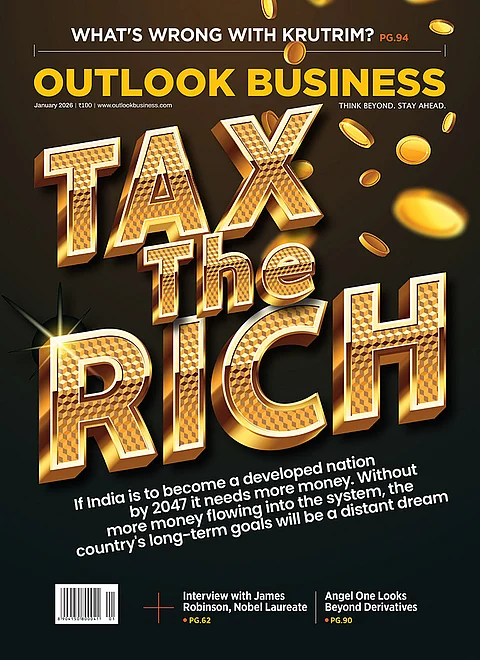The FM covered a lot of ground in the Union Budget 2020 and also left a lot of spaces untouched. Many measures were announced along expected lines, while many announcements that were widely expected found no mention in the budget.
As was widely expected, the government invoked the “escape clause” under the FRBM Act (Fiscal Responsibility and Budget Management Act), and allowed itself to avail of the leeway in that it allows in fiscal math. Under the escape clause, the government has an additional leeway of 0.5 per cent of GDP in the fiscal math that makes room for some slippages. The government revised the 2019-20 fiscal deficit to 3.8 per cent of GDP indicating a widening of 0.4 per cent of GDP from the previous year. For the year 2020-21, the government has pegged the deficit at 3.5 per cent of GDP. Interestingly, the consolidation in the fiscal number for the next year is largely predicated on a fairly aggressive asset-sale program, the success of which is suspect. Nonetheless, asset-sale is the right way to fiscal consolidation as it gives the government much more breathing space fiscally to carry out an expansionary program.
Changes to income tax slabs were also widely expected, but the introduction of a new tax regime was slightly unexpected. The government introduced a new and simplified tax regime with an intent to increase the disposable income of middle-class Indians. As per the new regime, income below Rs 5,00,000 will attract no tax while income between Rs 5,00,000 and Rs7,50,000 will be taxed at 10 per cent, between Rs 7,50,000 and Rs 10,00,000 will be taxed at 15 per cent, between Rs 10,00,000 and Rs 12,50,000 will be taxed at 20 per cent, between Rs 12,50,000 and Rs 15,00,000 will be taxed at 25 per cent and finally any income above Rs 15,00,0000 will be taxed at 30 per cent. However, it is important to note that this regime is optional and can only be availed by those tax paying individuals who do not claim any deductions. While the new regime may appeal to low income tax players, payers that fall within the higher tax brackets will have to evaluate the benefits of moving to the new regime.
Several measures were also announced to attract foreign flow into the bond markets. These included the announcement that specified categories of government securities would be opened fully for non-resident investors, an increase in the limit for foreign portfolio investments in corporate bonds from 9 per cent of the outstanding stock to 15 per cent and a proposal to grant a 100 per cent tax exemption to their interest, dividend and capital gains income in respect of investments made in infrastructure before March 31, 2024 and with a minimum lock-in period of three years.
Infrastructure, education, agriculture, MSMEs and governance formed a part of the budget speech and had something to offer. Overall, it was a balanced budget that satisfied most if not all expectations.
Five Key Takeaways From The Budget
Abolished Dividend Distribution Tax (DDT): Addressing a long-pending demand of the industry, the dividend distribution tax has been abolished. This means dividends will now be taxed per the tax applicable in the hands of the receiver. On individual investors, this is likely to have a mixed impact. For investors that fall within the lower tax bracket, this will be positive. However, for investors that are in the highest tax bracket, this is not entirely positive. On the other hand, one can expect to see a rise in yields of stocks that do not have a large domestic promoter holding as individual promoters may choose the buyback route over dividends considering that dividends in their hands may be taxed at over 40% versus 20%-30% under buybacks.
Deepening Bond Market: The Government has proposed to expand debt-based ETFs by floating a new Debt-ETF consisting primarily of government securities. Additionally, the government will permit Indian as well as Non-Resident Investors to invest in certain specified categories of government securities. This will help in the inclusion of Indian bonds in the global indices which will create greater demand for Indian bonds.
Disinvestment target was enhanced to Rs 2.1 lakh crore. The finance minister in a big bang announcement mentioned that FY21 disinvestment targets are Rs 2.1 lakh crore. This primarily hinges on the sale of LIC (IPO), BPCL and stake sale in IDBI Bank.
New optional tax rate: The proposed new tax rate is not simple. The government decided to cut personal income tax rates at the lower-to-middle end of the tax paying pyramid. However, the lower tax rate can only be availed if various exemptions that are currently available, particularly linked to savings and investments, are not availed. Alternatively, individuals can choose to remain in the old system with a tweaked set of exemptions. Again, this move has a double edge. Individuals must evaluate whether they are likely to benefit from the new tax regime or are better off with the old regime. Overall, there is a chance that this might boost consumption as the portion of taxpayers opting for the new regime will have higher disposable income which can make its way into consumption.
FY21 fiscal deficit at 3.5 per cent: Fiscal consolidation was inevitably one of the main focus areas for the government. The government has revised the 2019-20 fiscal deficit to 3.8 per cent of GDP indicating a widening of 0.4 per cent of GDP from the previous year. For the year 2020-21, the government has pegged the deficit at 3.5 per cent of the GDP.





























